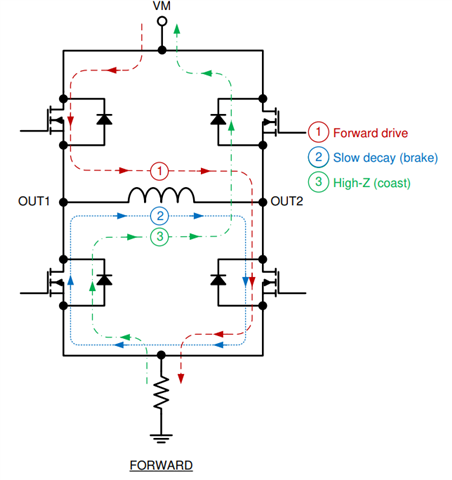Other Parts Discussed in Thread: DRV8231A, , DRV8231
Hi team,
Could you help to share the spec. of N-FET body diode?
How much current can the body diode of the N-FET stand to make sure IC will not damage? I would like to double check this spec. of DRV8870\DRV8231A with you.
Thanks.





